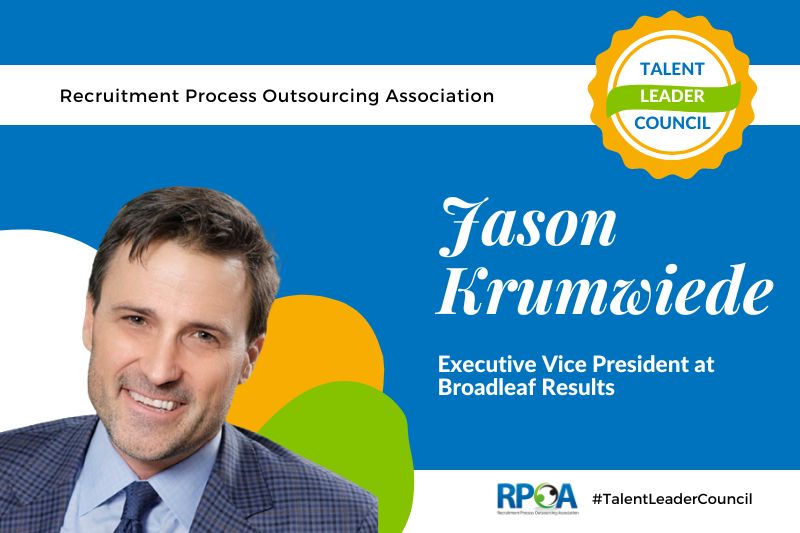Take a Strategic View of Recruitment Process Outsourcing (RPO)
Focus on the Real ROI of RPO
Viewing recruitment process outsourcing (RPO) through a cost lens alone can cloud your vision and obscure many of its most critical strategic impacts. While the initial rationale for outsourcing all or portions of the recruitment process is typically to reduce hiring costs, the true positive impact of RPO extends far beyond hard-dollar savings. That’s not to minimize the importance of cost-reduction. However, focusing on savings alone can be somewhat short-sighted.
At the strategic level, a well-designed and executed RPO solution can, for example:
- Provide the scale needed to rapidly address market opportunities
- Promote a strong and consistent employment brand
- Better engage candidates
- Enhance the hiring experience for candidates and for internal customers, i.e. hiring managers
The result is better hires who more closely match your job requirements, culture, values, and overall workforce—exactly when and where you need them. Getting the right people in the door can positively impact productivity, retention, and a host of other contributors to higher performance and a better bottom line. This is supported by research conducted by a number of analysts, including:
- Aberdeen Group, which found that fully 41 percent of companies say they are using their RPOs to fill specific roles and job families that are closely tied to organizational performance and productivity, compared with just 11 percent in 2011 (source).
- The Outsourcing Institute, which contends that “Recruitment process outsourcing (RPO) has undergone a transformation. What once was a function focused on cost, scale and “filling seats,” today is a strategic workforce initiative that includes comprehensive, talent acquisition solutions that benefit buyers’ businesses” (source).
Achieve Scale, Quality, and Speed
To illustrate the full impacts that an effective RPO can generate above and beyond cost savings, consider three critical elements that impact talent acquisition performance: scale, quality, and speed. Once you achieve scale to meet the hiring demands of the business, quality and speed will soon follow.
Scale. Many buyers look to RPO as a solution to manage spikes in hiring volume, whether seasonal, cyclical or upon entering new markets. More important than the ability to quickly scale up to meet your needs is the ability to scale back without impacting responsiveness. An RPO partner can offer an efficient, variable cost process for accelerated sourcing and screening via best-in-class technologies and scalable staffing to ensure more mistake-proof, on-demand hiring. By leveraging sourcing and recruiting infrastructure across multiple clients, an RPO provider can offer substantial flexibility as well as specialization across skill sets and industries—to a degree typically out of reach to a single organization.
Quality. No one sets out to hire low performing employees, but that rarely stops unqualified applicants from lining up for consideration. Any recruitment process should be engineered to quickly identify the best-qualified applicants, so that hiring efforts focus on “screening, assessing and selling” the opportunity to the right individuals as opposed to eliminating non-qualified candidates from the process. Talent communities help organizations pre-qualify talent in order to streamline sourcing. As candidates move through the hiring pipeline, skill and behavioral assessments can help ensure initial impressions ring true, as pre-hire evaluations are proven predictors of post-hire performance. Ensuring a great candidate experience will also drive higher engagement, a critical contributor to better productivity, performance, and retention.
Speed. Unfilled jobs are costly, stalling productivity, deteriorating morale, and hampering revenue generation. An efficient recruitment process compresses the hiring cycle, reducing the time that open positions remain vacant, while increasing the potential for better hires. Active talent communities and a strong employment brand engage candidates early, decreasing the productivity and performance ramp for new employees. Talent pipelining eliminates the need for start/stop sourcing, allowing businesses to tap into a ready-made database of interested candidates as hiring needs arise. Technology accelerators, such as video interviews and automated scheduling tools, can streamline some of the most time-consuming tasks in the recruiting process. Finally, better visibility into the overall process allows organizations to adjust speed and change course as needed and is a valuable strategic tool to ensure optimal outcomes.
Everest Group reports that RPO buyers look for value beyond cost and scalability. They place increasing emphasis on strategic value-added services. These include talent communities, analytics, employer branding, workforce planning, assessment, and process reengineering.
The Hidden Costs of Getting Hiring Wrong
While the quality, speed and scale considerations associated with RPO enhance its value to an organization, poor hiring practices often impact the other side of the equation and make an equally compelling business case for RPO. Given that surveys show that as many as 98 percent of CEOs report that finding candidates with the competencies and training to fill open positions is a problem, affecting all skill levels needed — from entry to the most highly technical (source), an inadequate, disjointed or ineffective hiring process is a huge drain on the bottom line.
Compounding this issue is that the metrics typically used to measure recruitment solutions may obscure the hidden costs of poor practices. This is due to the fact that recruitment key performance indicators embedded in terms of service level agreements are typically ones that are familiar to HR leaders; not ones that measure direct impacts to the business itself. Metrics such as cost per hire, time to fill, and interview-to-hire ratio are important, but it is equally critical to understand how poor hiring practices can erode business results:
Higher turnover can negatively impact P&L.
Being overstaffed or understaffed during peak times can have a significant impact on the financials.
Inability to scale hiring can lead to missed market opportunities.
Poor candidate quality can impact customer loyalty.
Less than perfect matches can create disharmony within work groups and lessen overall team effectiveness, resulting in lower output and missed deadlines.
Create longer new hire time-to-productivity gaps
Take A Strategic View to Achieve Better Outcomes
Bain & Company’s 15th Management Tools & Trends survey showed 74% of executives believe innovation is more important than cost reduction for long-term success, underscoring the importance of having the right people on the team.
Viewing recruitment process outsourcing (RPO) through a cost lens alone can cloud your vision and obscure many of its most critical impacts. It can blind you to the potential opportunity for better strategic outcomes. That is where ROI is best measured. With a more strategic view of recruitment, you may achieve the agility to scale to your needs at any time; you will attract higher-quality, better-matched candidates; you will see higher engagement and greater productivity from those you hire; and performance may exceed expectations across the board. Getting recruitment right can impact performance in ways you never anticipated. When you expect better outcomes, you have an opportunity for a higher-value solution and greater returns on your talent acquisition investments.




